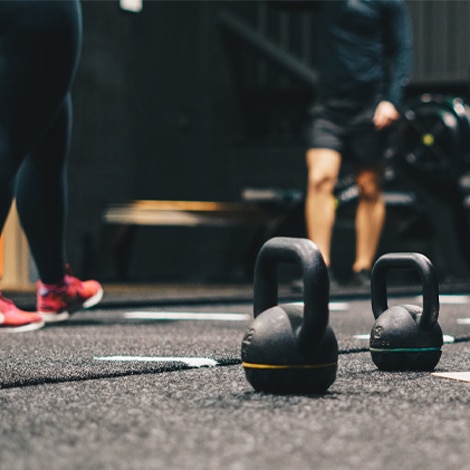By Alistair Inglis
A continued increase in the number of data-collecting devices, wearables, and apps means that sports clubs and teams can gather more information on their athletes than ever before. But to elevate engagement, prompt positive habit changes, and get athletes on board with performance programs, organizations need to select specific data and share it in a way that’s easily understandable and applicable. In this article, we’ll share some best practices for putting the most pertinent information in athletes’ hands at just the right time.
One of the challenges with athlete data sharing is that many organizations have put most of their efforts into the technology that collects information without deciding how they can consolidate, contextualize, and present it back to the athletes they serve. This is where an athlete management system (AMS) such as Smartabase can be useful. Its ability to create individualized dashboards, reports, and other graphical tools allow you to display data in a user-friendly way that’s relevant to players’ performance, recovery, and overall wellbeing.
Closing the Loop on Data Collection
Whenever you ask a team to spend time entering data – such as completing a daily wellness questionnaire in Smartabase – you should provide something in return to show them the value of participating. From an athlete’s perspective, it’s frustrating to invest time into data collection only for the information to seemingly go into a black hole. This can reduce compliance, compromise trust, and make data gathering seem like a tiresome burden rather than a useful activity that could help improve performance. Completing the loop by showing them at least some of the information – even if it’s merely a quick summary or a simple chart – can go a long way to gain the buy-in needed for any data capture initiative to succeed.
That being said, teams can fall into the trap of oversharing data with their athletes to prove their information isn’t just disappearing. Instead, a more strategic approach is to take a step back and ask, “Why do we want to share this with our athletes, and what do we want them to do with it?” Maybe the aim is to connect education on the importance of a recovery modality to their actual data. Or it could be that you want to show how practice and game stats align with their individual development plan. The important point here is that you have a specific reason for collecting the information in the first place and can communicate this purpose back to the athletes before sharing it with them.
Seeking Athlete and Coach Input
Deciding which data points to present to your athletes should be a collaborative approach. Always keep in mind that they’re your end users and the goal of collecting and sharing their data should ultimately be about improving things for them, not checking a box or demonstrating the skills of your sports science group. So ask exactly what they want to see, why that would be beneficial, and how they’d like to view or interact with it. One of the best things about Smartabase from an athlete perspective is that it allows you to present similar information in different ways, using graphical tools like charts, graphs, and radar plots. This enables you to tailor data sharing to fit athletes’ preferences.
It’s also important to consult with coaches before serving up data to athletes. There might be some information that they think is vital to communicate, while keeping other data sets for internal use only. The sports science team could have its own opinions on this, you’ll need to find common ground.
Timing can be significant as well. For example, sharing game stats too soon might be counterproductive, particularly after a loss. Whereas if you wait too long, they could start to lose relevance. Similarly, showing practice data earlier in the week could be beneficial, while making it available the night before a match might be an unwelcome distraction. The analytics team should collaborate closely with the coaching staff to ensure that the right information is being delivered to athletes at the best possible moment so that it’s additive and not subtractive.
Seeking input from coaches and athletes shouldn’t be a one-and-done task, but rather an iterative, continual process. Once the HP analytics team has decided what to share, they should periodically follow up and seek honest feedback to find out which types of data are resonating and those that aren’t so that they can tweak dashboards to better fit end users’ needs. Perhaps there’s a certain kind of information that athletes want more of, or something that they’d like less details about. The same goes for the coaching staff. As there’s a limited opportunity to share data, it should be as specific and precise as possible.
Keeping Things Simple
Another common pitfall with athlete information sharing is overcomplicating it. Putting out too much performance data too soon will just lead to overload. Instead, it’s better to start small and leave players wanting more. You can always layer in details or different data sets later, but if you go overboard at the beginning, it will be difficult to scale back and recapture athletes’ attention. They’re already bombarded with information from coaches and practitioners like sports psychologists, nutritionists, and strength and conditioning staff. The last thing they need is to be presented with a large amount of confusing data.
The terminology you use when conveying information is another facet of simplicity. Unless you’re working with a highly technical group of players, there’s no point in using scientific jargon. If they can’t understand what you’re communicating, they won’t be able to apply it and will switch off when faced with unnecessary complexity. So translate your insights into their language, apply it to their day-to-day lives, and keep it simple.
The delivery method is also crucial. Gone are the days of printing out multi-page reports. It’s much more convenient for an athlete to pull out their phone, open an app, access a little information, and get on with their day. This is even more effective when you use visual methods to share trends, rather than a page full of numbers.
Sharing Teamwide Information
As crucial as it is to tailor certain data types to individual athletes, there are also use cases where sharing information with a whole group can be more beneficial. For example, some teams display a Smartabase dashboard in the locker room to show who has and hasn’t completed daily check-in details, which could include subjective data captured with a wellness questionnaire and objective measures like body weight. In this setting, data sharing can improve accountability and adherence. In the weight room, putting up leaderboards can increase engagement by stoking intra-squad competition.
On the field, a coach could show the whole team details after a practice to positively reinforce good attitude and full effort. They might simply say how far the players ran, how much above their team average this was, and then congratulate them for working hard. Or maybe the team exceeded its target for the number of total passes or tackles in a game, and the coaching staff wants to highlight this afterward. Such things might seem small, but if they’re repeated consistently, they can reinforce team spirit and remind players that they’re all working together to achieve the same aims.
Balancing Consistency and Novelty
One element of information sharing that’s often overlooked is being consistent in when it’s being presented to athletes so that they aren’t caught off guard. For example, they can always use the Smartabase mobile app to see a high-level overview of their performance, whereas game stats are available the day after a match, a weekly training summary is released every Friday, and a four-week progress report is posted at the end of each month. This kind of cadence makes it more likely that athletes will engage with your program and incorporate data-driven insights into their regular routines.
Another way to get them on board with a data-informed approach is to balance consistency with offering some degree of novelty. A common challenge with wearables is that because they show the same metrics all the time, athletes can start to lose interest. The versatility of Smartabase enables you to change up how you visualize similar information so it stays fresh and athletes aren’t tuning out because they’re just looking at the same thing every day.
Another way to add variety is to gather data from different domains – such as GPS stats from practice, results from performance screens, and totals from gym training – and either break them down individually or include them in a composite score, such as a performance rating that’s out of 100. Making data dynamic gives you a better chance of capturing and holding athletes’ attention.
Turning Data into Actionable Insights
Once players get comfortable with when they’ll be receiving certain types of information, they will also want to know what they’re expected to do with it, if anything. This could apply to the whole team or just certain individuals. For example, the coaching staff may want every player to look at match stats and then enter their own subjective rating of their performance in Smartabase, along with a comment about what they could do better next time. Or if an athlete is in a return-to-play process, the medical staff might ask them to enter details about how their rehab is going once they see their daily availability/injury report pop up.
In other cases, you might share data strategically as part of a wider initiative at a certain point in the year, like preseason training. The sports scientist could mention sleep scores in a presentation on recovery and suggest that if a player sees a red flag to indicate inadequate rest during the season, they should use the sleep hygiene tips they’ve been provided. The “why” here could be sport-specific, such as the results of a research study showing how poor sleep reduces shooting accuracy in basketball. You could then schedule several check-in points to reinforce sleep education throughout the year.
Athletes are always looking for ways to improve their performance, so the more relevant data is to them (versus just being generic information) and the clearer the connection is to their game day output, the more actionable it will be. If information is presented simply, concisely, and visually, they’ll be better able to understand it, and keeping them in the loop to determine what is shared and when will make the whole team feel like they’re a valued part of the process. Ultimately, sharing data shouldn’t be an isolated initiative, but an integral component of a collaborative, athlete-centric approach that informs, educates, and equips players to implement positive changes.








